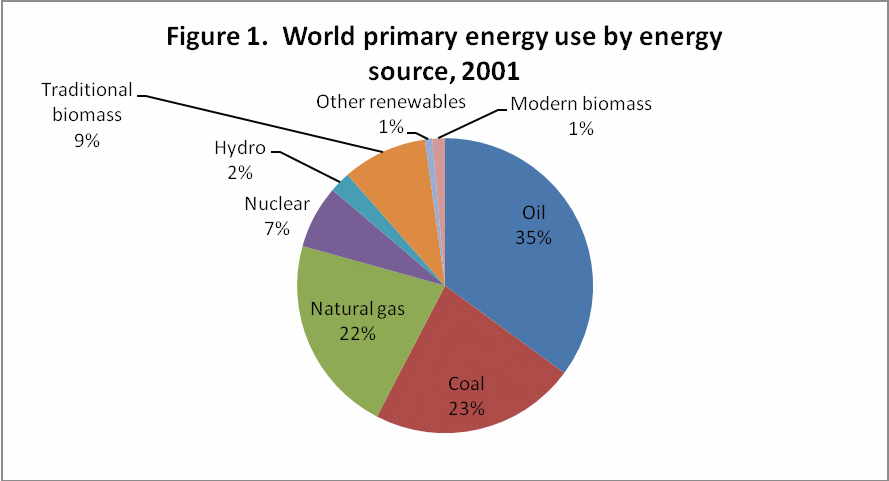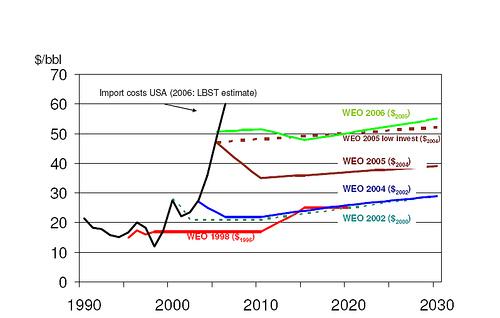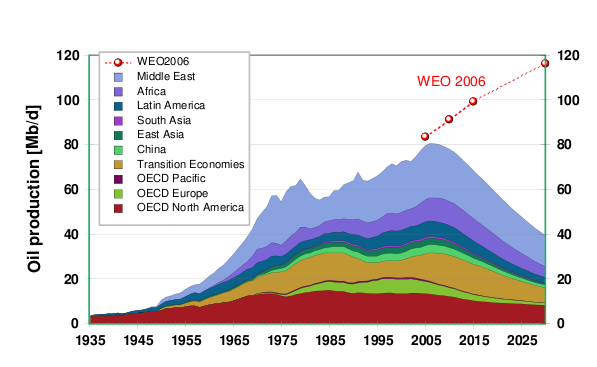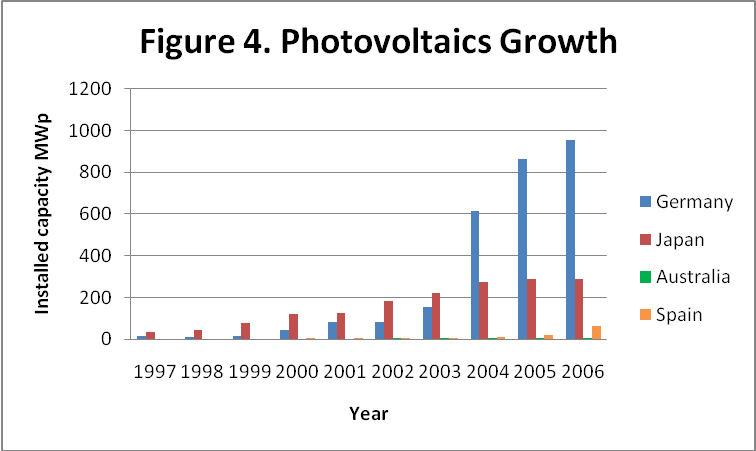To mitigate the negative effects of climate change and for preservation of energy, a shift to sustainable development is urgently required. Therefore, a major issue is to alter the generation of electricity from finite sources such as fossil fuels and uranium to renewable energies. This essay attempts to explore the potential of solar power as an energy resource, highlight the energy policies of certain countries and analyse the major advantages of shifting power supplies to solar energy.
In the recent years, the most dominant sources of electricity generation have been fossil fuels. According to the United Nations Development Programme (UNDP) (2004, p. 28), approximately 80% of primary energy production in the year 2001 was from fossil fuels which include oil, natural gas, and coal. This has resulted in two global problems; global warming with its detrimental effects of serious climate changes and the depletion of natural resources, causing a serious threat to the energy supplies of the world.

Primarily, the issue of energy security has been a cause for constant and serious concern to the governments of all the nations, except the oil rich governments or the Organization of Petroleum Exporting Countries (OPEC). In recent times, the heavy dependence on fossil fuels coupled with surge in energy demands due to the rapid growth of developing countries, particularly China and India, have spurred prices of oil to peak levels. In the annual report of 2007 (Figure 2), “World Energy Outlook”, the International Energy Agency had predicted that oil prices would be below 60 US dollar by the year 2010. However, in June 2008, oil prices peaked at 130 dollar per barrel. The prices of oil have skyrocketed by a factor of 6 in the period 1998-2008.
The latest rise in oil prices has not simply affected petrol and gasoline prices, but has caused an upsurge in the prices of daily commodities, the world over. Figure 2 illustrates the unpredictability of oil prices, contrary to expert predictions.
According to the assessment of global oil production by the Energy Watch Group (Figure 3), the world is likely to face greater difficulties with reduction of oil production and the growing demand of oil and energy by the developing countries. The prices of not simply oil, but those of finite resources including coal, natural gas and uranium have also risen substantially. Hence, in order to improve excess dependence on oil and limited resources, and subsequently establish energy security, it is now necessary to employ techniques and resources to generate renewable energy.


To facilitate the mitigation of the detrimental effects of climate change and global warming it is necessary to devise and implement ways and means to reduce the emissions of green house gases. It is for this purpose that the 3rd Conference of the Parties was held in Kyoto in 1997.
“The Kyoto Protocol commits developed nations and countries in transition to achieve quantified reductions in greenhouse gas emissions. Representatives of these countries, termed Annex 1 Parties, agreed to reduce their combined emissions of six designated greenhouse gases to at least 5 per cent below levels in 1990, between 2008 and 2012, with specific targets varying from country to country” (Pittock, 2005, p.248. p.249).
The major greenhouse emission countries are now required to set their next targets, which points to the inevitable shift to renewable energy.
An example of a major green house gas emitting country is South Africa which has been ranked seventh in the list of greenhouse gas emissions per capita. In the year 2007, nearly all of South Africa’s electricity (92%) was generated form coal. The country has been facing severe power crisis since 2005 and in the current year (2008), electricity shortages have been reportedly crossed 10 percent (Sebitosi and Pillay, 2008, p.2514), marked by frequent blackout periods in the country.
The international Energy Agency (2007) confirms that “Rising oil and gas demand, if unchecked, would accentuate the consuming countries’ vulnerability to a severe supply disruption and resulting price shock”, affirming the urgency of the shift from fossil fuels to renewable energy resources.
Figure 4 illustrate Japan the world’s leading country on installed capacity of the photovoltaics in the 1990’s up to early 2000’s until Germany surpassed it in 2004. One of the crucial factors responsible for the stagnation of Japan and the rapid increase of photovoltaics in Germany is the German policy; the Renewable Portfolio Standard (RPS) and the Feed-in law, which has been replaced by the Renewable Energy Act in April 2000 in Germany.

The RPS is a policy followed by Japan, which necessitates retail electricity retailers to include the regulated amount of electricity from renewable energy sources including wind, solar, etc. The retailer was however, allowed to accomplish this regulation by generating power by themselves or purchasing renewable electricity from other sources (Ministry of Economy, Japan, 2002, 6th June). The controversial target of 1.35 per cent of the total electricity is supposed to be generated from renewable energy sources by 2010.
This law has notable flaws. Firstly, the mandatory goal is too law, secondly, the monopoly of each region by ten power companies and thirdly, excess generations or purchasing of electricity from renewable energy sources can be carried over to next year (Enshu, 2006, p.3. p.4). Consequently, if the power company meets the obligations, electricity from renewable energy sources would not be generated any more, because there are no laws to encourage power companies to include renewable energy electricity more than the targeted figure and to keep renewable energy suppliers to be uneconomic situation.
On the other hand, in Germany, the tariffs were first approved into the Fed in January 1991 under the act of Renewable Electricity Fed commonly stated as the feed-in law. After a series of amendments, the Renewable Energy Act was enacted in the year 2004. In the same year, installed capacity in Germany recorded the highest growth. The prime feature of this law is the long-term fixed price support mechanism, which obligates the grid operator to purchase all electricity generated from renewable energy sources, resulting in the reduction of excess power generation cost, investment risk of the energy suppliers and other related maintenance and construction costs, resulting in the rapid growth of the manufacturer of photovoltaic in Germany.
In the year 2007, the leading world producer of photovoltaic, Solar Sharp, has been outdone by German based Q-Cells, established in 1999. The Commission of the European Communities affirm that Feed-in regulations are the most effective and cheapest way to promote an increased generation of electricity from renewable energy sources (Valle Costaa, Roverea, and Assmann, 2006, p.82). the Renewable Energy Policy Network 21 (REN21) ( 2008, p.24) also establishes that “Feed-in tariffs have clearly spurred innovation and increased interest and investment in many countries.”
Thus, the advantages of shifting to renewable energy sources are apparent. A shift in electricity resources from fossil fuels to renewable sources such as wind and sun is necessary to mitigate the disastrous effects of climate change and global warming, a serious issue which nearly all developed countries are aspiring to solve, particularly those countries which belong to the ‘Organization for Economic Cooperation and Development’. Furthermore, solar energy has tremendous potential to fulfil demands. This has been confirmed by Dr. Knies (2006, p.2), who states that in the desert regions alone, solar energy has exceeded by 700 times vis-a-vis the human energy consumption.
Besides, as compared to fossil fuels, research investments for solar power have been relatively less and “based on past experience, it had been projected that the prices will fall by 18 per cent in real terms with every doubling of installed capacity” (Dr. Diesendorf , 2007, p.164).
